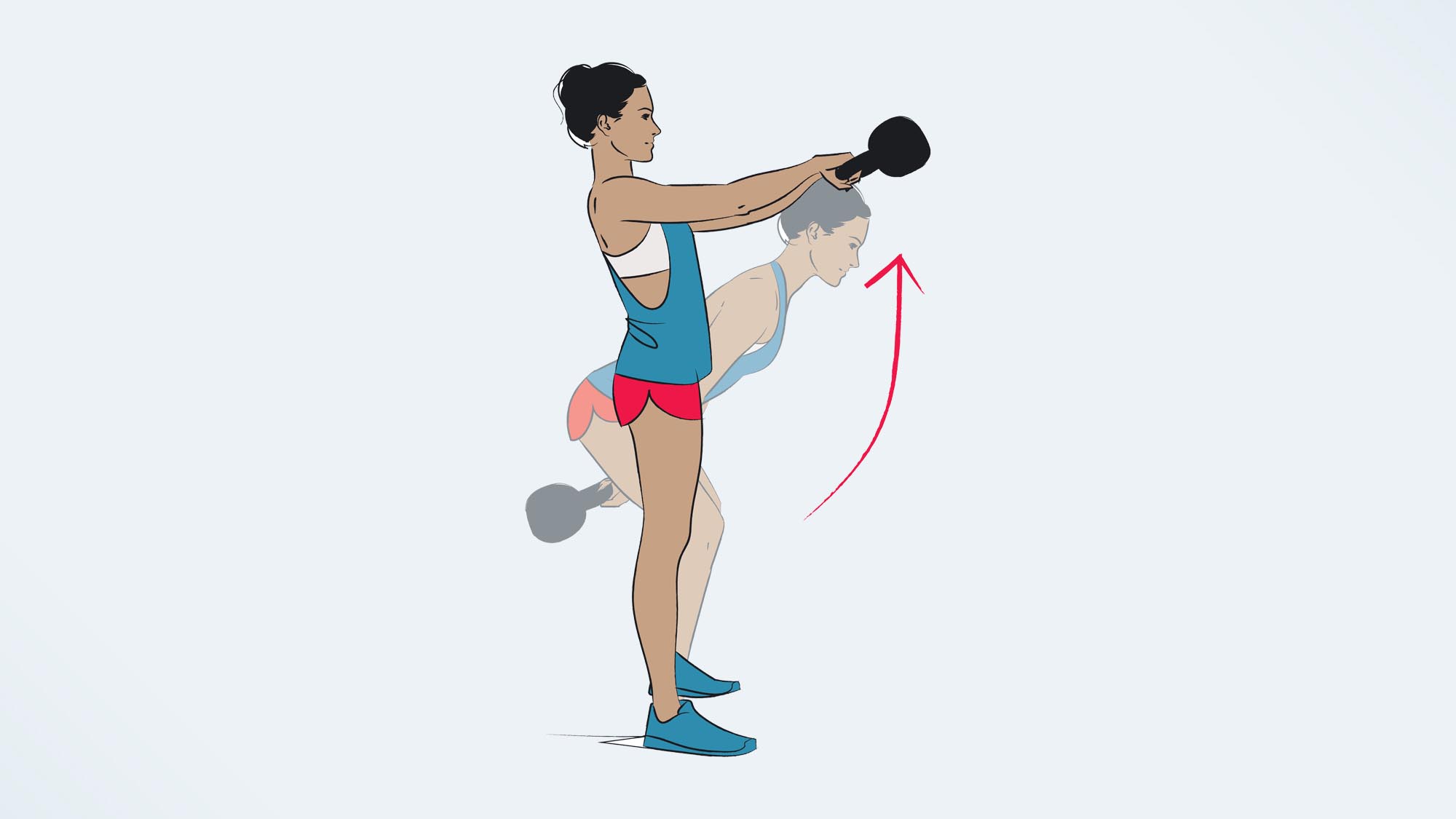I did 100 kettlebell swings a day for a week — here’s what happened
This workout is a full-body burner

When done correctly, the humble kettlebell swing is a full-body workout. Not only do they strengthen the posterior chain (the muscles along the back of the body), and raise your heart rate in a short amount of time, they target the legs, arms, and core. It’s a high-intensity, low-impact move, but what would 100 a day do to my body?
To find out more, I grabbed a kettlebell and got started. Would 100 kettlebell swings a day for two weeks help with my posture and strengthen the muscles along the back of my body? I’m no stranger to a weird workout challenge — read what happened when I did 50 hamstring curls a day for a week here, or 100 dead bugs a day for a week, yet kettlebell swings don’t often feature in my strength workouts, so 100 a day was definitely a test. Read on to find out what happened.
Before I get going, a reminder that doing 100 reps of anything is a lot, and targeting the same muscle groups every single day isn’t recommended. If you’re new to kettlebell swings, or you’re returning to exercise following an injury, it’s a good idea to check your form with a personal trainer before adding reps or weight to the exercise.
How to do a kettlebell swing

The first thing to remember before doing a kettlebell swing is that the swing part of the movement comes from your legs, not your arms.
1. To do a kettlebell swing, start by standing on your exercise mat (we’ve got a list of the best yoga mats that double as exercise mats if you need suggestions) with your feet shoulder-width apart and a kettlebell in front of you.
2. Bend your knees and grasp the kettlebell with two hands.
3. Engaging your core, swing the kettlebell back between your legs; then, as you swing upwards, engage your glutes and your abs, and keep your arms outstretched as the kettlebell goes up.
Sign up to get the BEST of Tom's Guide direct to your inbox.
Get instant access to breaking news, the hottest reviews, great deals and helpful tips.
4. Aim to raise the kettlebell to chest height, with your arms outstretched. Squeeze your glutes and snap your hips at the top of the movement.
5. Let the kettlebell fall back down naturally, and swing it between your legs again for your next rep.
Of course, kettlebell swings can also be done using a dumbbell, holding the weight by the plate, not the handle.
Remember, the movement in the kettlebell swing comes from your hips — you’re not lifting the weight with your arms. Think of your hips as the hinge in the movement — your lower body stays glued to the ground, with your weight back through your heels, and your torso moves forward and back to swing the weight. The major muscles worked are along the back of the body — this is not a squat and lift.
Be careful not to bend your knees too much during this move (again, it’s not a squat), and avoid leaning back at the top of the movement, as you’ll put too much pressure on your lower back — keep your core engaged to avoid this.
Read more about how to do a kettlebell swing, and the variations to try here.
I did 100 kettlebell swings a day for 14 days — here’s what I learned
Eager to master the move, I grabbed a kettlebell and started swinging; here’s what I learned.
This move worked my entire body
I wasn’t expecting to feel this move just as intensely as I did. It hit all of the different muscle groups in my body, and I could feel my glutes and abs working hard as I swung my kettlebell back and forth.
Doing 100 a day meant I had a tendency to rush through my reps to get to the end, but moving too quickly through kettlebell swings puts too much focus on the upper body when the move should come from the legs.
Doing 100 swings a day was a lot
As well as feeling this exercise in my glutes and abs, after a couple of days of 100 reps, I really felt the move in my lower back. Concerned I was arching my back during the exercise, I videoed my form and sent it to a personal trainer friend, who assured me that I wasn’t doing anything wrong, but going from not doing any kettlebell swings to 100 a day was probably a bit of a jump. Over the next few days, I broke the challenge up into four sets of 25 reps, keeping a kettlebell by my desk and doing 25 at various points of the day, rather than all in one go.
As a reminder, to prevent lower back pain during kettlebell swings, think about engaging your core during the exercise. To do this, either think about sucking your belly button into your spine or bracing your stomach, as if you’re about to be punched. Here’s more about engaging your core, and why it matters.
I got a couple of blisters
Doing kettlebell swings is said to help you work on your grip strength — something I definitely need to practice. By about day five or six of my challenge, I started developing blisters on my hands from the kettlebell. This is a sign I don’t lift weights half as often as I should do, but a surprise nonetheless.
I found it easier to activate my glutes on the run
On the days when I’d sneak my kettlebell swings in before heading out for a run, I definitely felt my glutes activating more as I clocked up my miles. Like many runners, I tend to have lazy glutes on the run, and I realized that doing the kettlebell swings before heading out the door helped me to fire them up as I was running. One study published in the Journal of Strength and Conditioning Research found that six weeks of kettlebell training improved explosive strength by almost 20%, so perhaps keeping the kettlebell as part of my pre-run warm-up will help me run faster in the long run.
I got more confident in the move
By the end of my two-week challenge, I managed to do a couple of days of single-arm kettlebell swings — a step up on the double-handed technique. These help increase the demands on your stabilizer muscles, and I definitely felt my shoulders working harder.
I’ll definitely be adding them to my strength workouts in the future
There’s no doubt about it — doing 100 kettlebell swings was one of my most boring challenges yet. Yet despite the achy back and the blistered palms, I really felt the benefits in my body. Of course, two weeks isn’t long enough to see any physical difference, but I felt like I’d worked my lower body and my core hard, and was running stronger because of this.
I’ll definitely be keeping kettlebell training in my routine going forward, but I’m looking forward to not having to do 100 swings tomorrow morning.
Looking for more inspiration? Read what happened when this fitness writer did 100 kettlebell snatches a day for a week, plus check out this 15-minute kettlebell ab workout.
Next: You've been doing pull-ups all wrong — here’s how to fix them.

Jane McGuire is Tom's Guide's Fitness editor, which means she looks after everything fitness related - from running gear to yoga mats. An avid runner, Jane has tested and reviewed fitness products for the past five years, so knows what to look for when finding a good running watch or a pair of shorts with pockets big enough for your smartphone. When she's not pounding the pavements, you'll find Jane striding round the Surrey Hills, taking far too many photos of her puppy.
